People
‘I Needed to Find My Community’: Solange Knowles on Why She’s Beginning a New Chapter as a Cultural Mogul
Solange has big plans to expand her creative company Saint Heron.
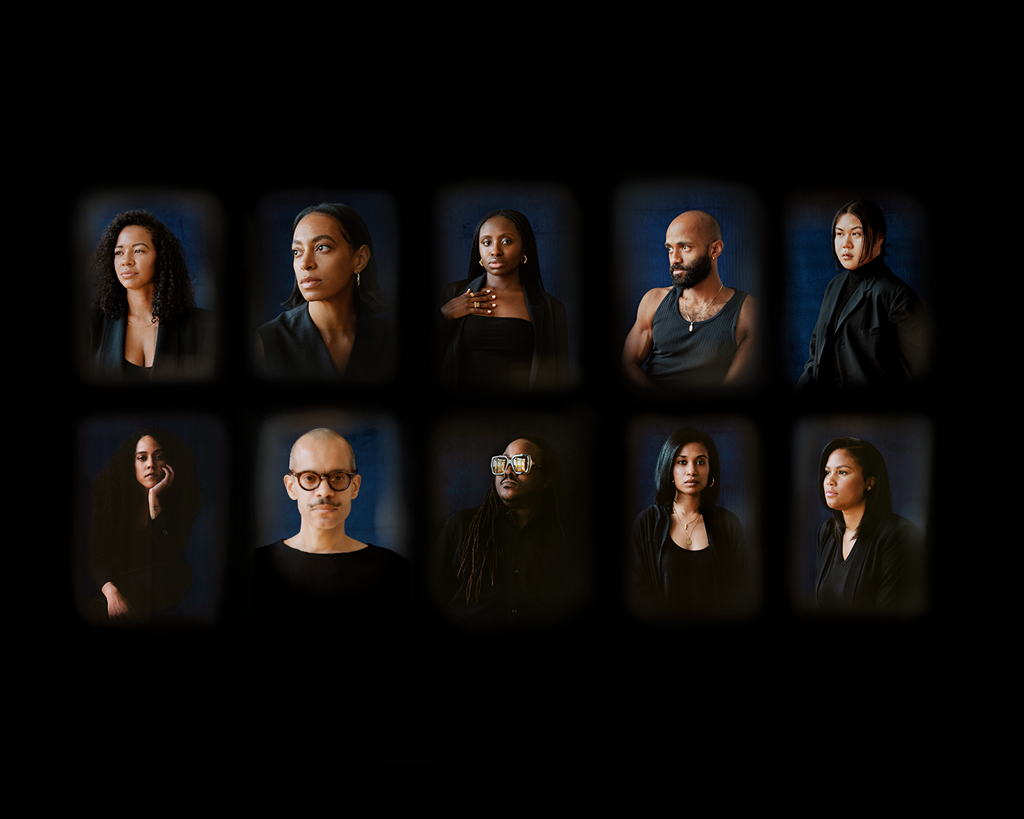
Solange has big plans to expand her creative company Saint Heron.

Naomi Rea

Solange Knowles—the artist, creative director, and musician (and sister to Beyoncé)—is dramatically expanding her company’s creative endeavors.
The online community she founded, Saint Heron, announced today that it is transforming into a multidisciplinary platform, studio, and creative agency. Originally launched in 2013 as a digital hub for cultural conversations, Saint Heron’s mission has been to preserve, collect, and uplift stories, works, and archives that amplify Black and brown voices. Now, in its next phase, it will release a dossier of literary and visual retrospectives of Black family and artist lineages through a series of temporary digital exhibitions, viewable on the Saint Heron website. Available for seven to 10 days, they will offer an in-depth look at emerging talent across art, sculpture, photography, design, and artisanship.
The first drop will be the story of Saint Heron itself, as told by Solange. The site will also host interviews between creatives focused on themes of familial lineage, homecoming, physical exodus, and personal reclamation, including with visual artist and writer Barbara Chase-Riboud and author Ilyasah Shabazz.
Saint Heron will also stage gallery exhibitions and installations away from the keyboard, relaunching its gallery, Small Matter, as well as a new artist-in-residence program, a permanent art collection, and a nonprofit library.
In an exclusive interview with Artnet News, Solange reveals the behind-the-scenes thinking behind the the decision to expand, why Saint Heron shouldn’t be thought of as “the Solange project,” and the importance of trust when it comes to nurturing creativity.
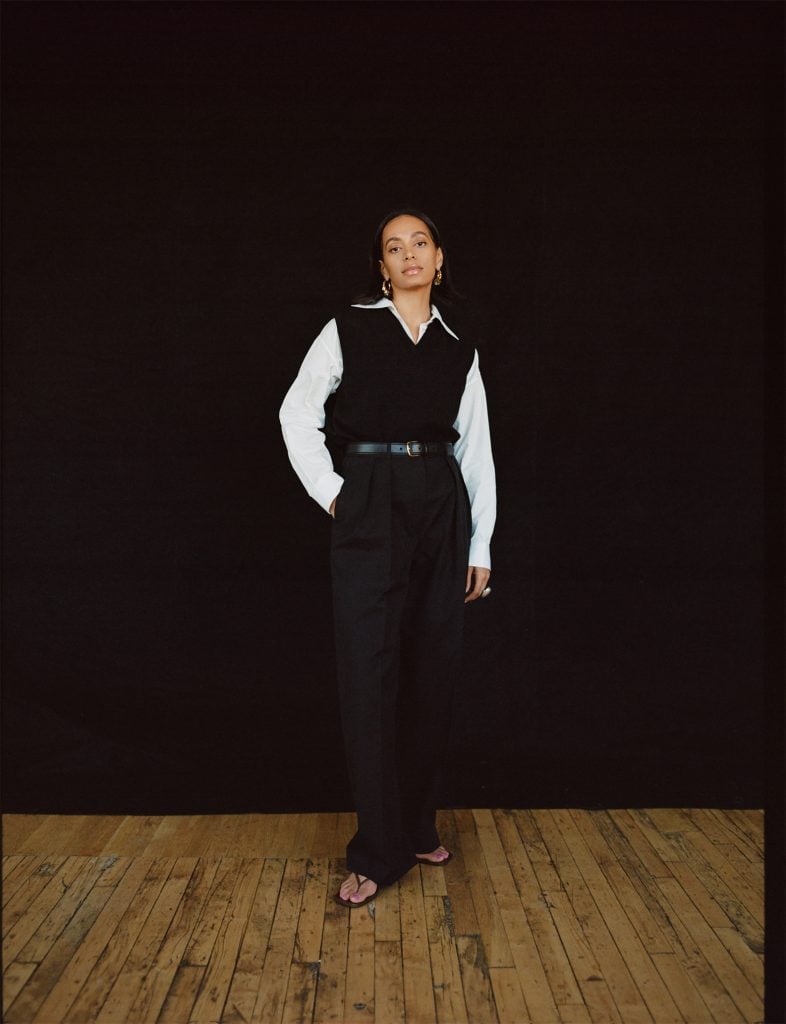
Solange Knowles. Courtesy of Rafael Rios.
You established Saint Heron in 2013 as a platform for expanding conversations about music, art, design, and culture. Can you tell me about what motivated you to launch the company?
Saint Heron is a process. It is a moving, living, and breathing evolution. It is a spirit. Like most of my projects, it started with a question, and in the process of answering, newer questions and calls to action arrived.
Nine years ago, I released an EP, True, and some of the cultural conversations we are having now have drastically evolved. I needed to find my community, and there was no space or outlet that embodied the nuances that represented the people who surrounded me and the space we took up in the world. And so I thought, I’ll just create it.
Saint Heron started as a music and cultural hub, with the urgency to create a time capsule of this growing community. There were a lot of fascinating experimental musical artists transforming the genre of R&B at the time, and so I created our inaugural eponymous Saint Heron compilation, featuring 12 artists, which celebrated the innovation of contemporary Black music. That album featured Kelela, Sampha, and Jhené Aiko, artists who were emerging then and have made such important impacts and contributions to R&B. I wanted to not only tell these artists’ stories, but honor those before us who really created the blueprints.
As most of our imprint was digital at the time it became important for us to have personal exchange with the community that we were building. We wanted to see and meet the people who were responding to this journey, and so instead of putting the album in record stores, I decided to honor the models left by Black-owned southern record labels like No Limit and Cash Money and had the artist Rashaad Newsome, who we commissioned for the album cover, create an accompanying moving mobile installation in which we sold records out of the trunk.
We started at the Studio Museum in Harlem and traveled through different stops throughout the city, and the energy felt like we were birthing something necessary. This was such an integral shift in the ethos of Saint Heron. We found that creating community exchange had to be immersive, in person, and multidisciplinary. From there, we begin to conceptualize exhibitions, artist collaborations, and creative experiences that fortified the conversations we deemed important to build the legacy of Saint Heron.
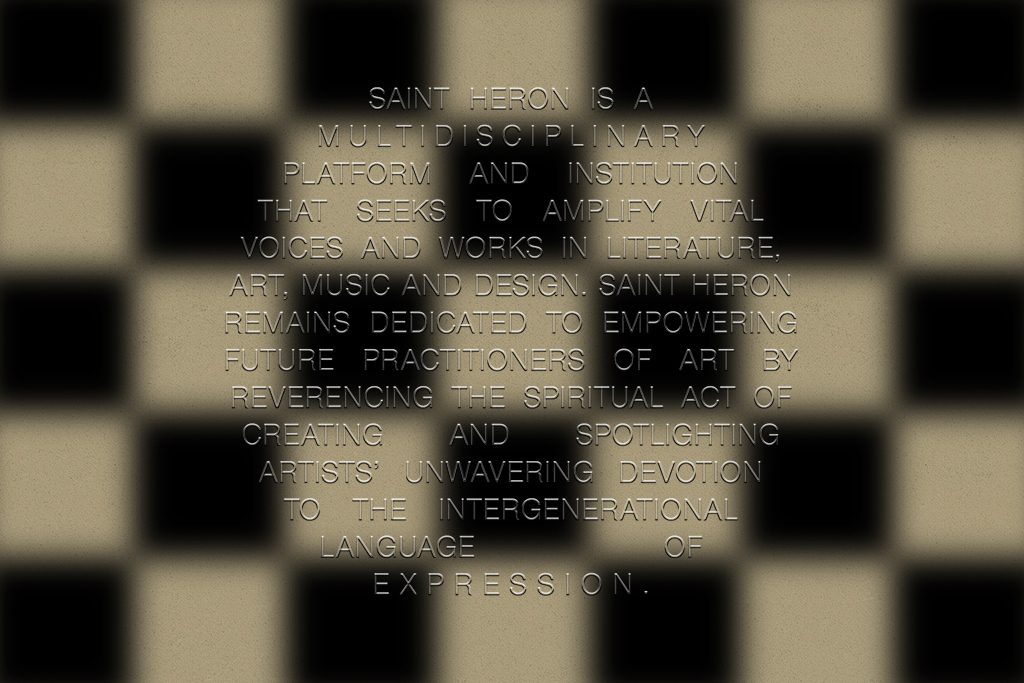
Courtesy Saint Heron.
Were any particular people or institutions in the art world an inspiration for you?
There have been such phenomenal models of institutions that have inspired me: Mark Bradford’s Art and Practice, Project Row Houses, Theaster Gates’s Rebuild Foundation, and the Underground Museum, to name a few. But also Augusta Savage’s The Savage Studio of Arts and Crafts, Studio Z , Linda Goode Bryant’s Just Above Midtown, and the Where We At collective co-founded by Faith Ringgold.
A recent visit to Detroit last year really changed the frontier for how I wanted to approach building this space. When I visited Exhibit 3000, Detroit’s techno museum, I left there leaving so incredibly inspired and moved. The gallery was not very large in scale, but had such a colossal impact on me. I was actually able to feel the story of this birth of a universe by these incredible Black innovators through the preservation of their collections as history tried to write them out; and with those artifacts, the importance of creating their own technology as a birth of a new Blackness.
The Dabls Mbad African Bead Museum also really helped me to imagine blurring the lines of the gallery and museum. With the beads, you were able to leave with something displayed, but it holds the history and the weight of the oldest trading system in Africa.
How has the Saint Heron project evolved since its inception, and what kind of artist community have you built along the way?
World making has become an important part of my process. When I started to center the work around what universes I want to leave to future ones, the thinking began to shift.
For an event at the Met Museum, we collaborated with Jacolby Satterwhite who created a digital installation, which was soundtracked to tapes his mother used to record thousands of her product design ideas on. This aligned with our mission to uplift voices of brilliant Black women whose stories need to be amplified louder and louder. It’s also been about taking these mutually connected cornerstones of culture that we are all inspired by, and not only celebrating them, but digging even deeper into the processes of these creations.
Saint Heron has held public artist talks with the likes of Julie Dash and Arthur Jafa in conversation with brilliant writer Rachel Kaadzi Ghansah. After the filming of this conversation, we sought to honor the safety and sacredness in physical space and decided to archive it for the time being. Saint Heron felt those expressions were intended to stay in that room with those people present, this drives our work around preserving the collective energy in a single moment in time. Saint Heron has also staged an exhibition of an artist from New Orleans, Lorna Williams, in which you could truly feel the sculptures’ life and voices in the space. Birds kept continuing to find their way into our gallery, flocking to the works.
From then, we started to transition into showcasing performance pieces which featured everything from dance pieces by No One Art House to musical meditations from artists like Sun Ra Arkestra and Kelsey Lu.
Saint Heron has showcased films by emerging experimental filmmakers, and hosted culinary experiences with chefs who focused on the spirit of fellowship and personal communion. It was also such an honor getting to showcase the more intimate sides of artists such as the late Barkley Hendricks and Lynette Yiadom-Boakye, who curated a playlist for our Wine and Grind series.
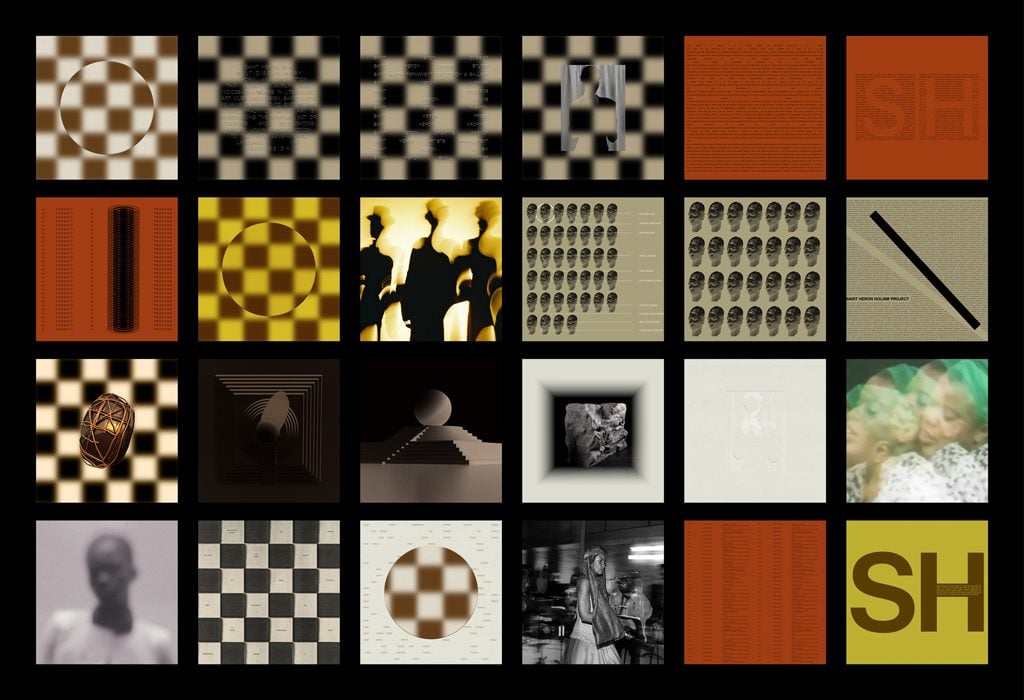
Courtesy Saint Heron.
Today you are announcing a new phase of Saint Heron, expanding it into a multidisciplinary platform, studio and creative agency. How will it be different?
Over the past few years our processes and projects have really taught us so many valuable lessons. For the longest time, Saint Heron was a team of three: myself, my dearest friend and sculptor Armina Mussa, and my former project manager NyAsia Burris. When the likes of the Whitney reached out to us to collaborate, we were not only curating these experiences, but we were also physically building them. This was all so important in creating a universe, and the space around it became just as important, if not more important, than the experience itself.
My work as an art director and creative director is precious to me. It’s an avenue to create a force that translates identity, spirit, and dynamism through the communication of design. Over time, whether it be through album artwork or stage design or performance pieces, I’ve always tried to create visual work that encompasses expressions my other works cannot communicate, and so the next evolution is for Saint Heron to be able to extend this work through a wider scope of collaborations and projects.
As part of the season, we will relaunch our gallery, Small Matter, which will house our inaugural art and design collection and an artist-in-residency program. Small Matter previously sold ceramic works and tactile objects by young artisans of color, as well as special-edition printed matter, and design collaborations. The gallery is expanding to house a range of works and design objects that have a unique sculptural and architectural language. These works range from large- and small-scale sculpture, to architectural objects, furniture collection, lighting design, garments, and more. Some of them I have personally designed exclusively for Small Matter, and some are designs from other collaborators and artists in our orbit. The gallery is continuing its passion to refurbish the historical conditions of ceramics by preserving our connection to the African-originating practice of forming vessels with mud and clay.
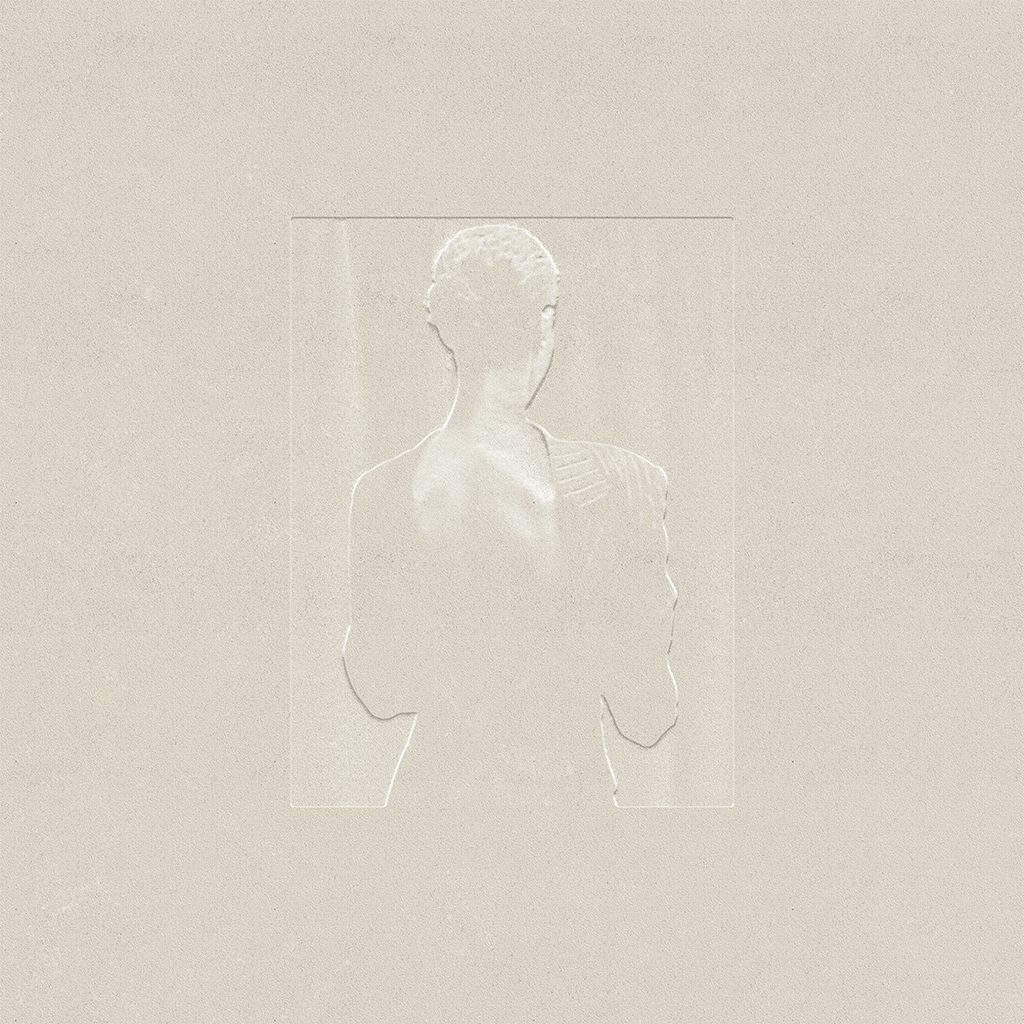
Courtesy Saint Heron.
Was there a standout moment when you knew the time had come to take Saint Heron further?
The standout moment was knowing that there are so many incredible collectives and hubs and communities led by phenomenal people, specifically Black women, that are doing the work with so much power. The spaces exist, and so beautifully. There are so many places to find your tribes, and we truly feel deep gratitude and appreciation for the way that we have learned from these spaces. Saint Heron has found ourselves and have a greater sense of ourselves deeper through this community.
I feel that when your mission statement has been served, or your questions have been answered, it’s time to ask new ones and evolve. Truly the answer and the vision became reimagining the urgency in building and preserving collections and archives of our own artists’ stories and works. We want to open up these works publicly, and make them accessible to students, our communities of creatives for research, and other collectors, so that the works generationally belong and grow with us.
The new Saint Heron has promised a series of “content drops.” Can you tell us more about what we can expect?
Our new digital dossier that will focus on publishing the works of strong literary voices and commissioning and showcasing original work of artists, photographers, designers, and artisans through a series of virtual exhibitions. Through this dossier we want to invite a meditation on consumption, by giving these important stories and creations time and intentionality to be lived and interacted with. We want people to revisit and re-engage, with each exhibition living one at a time, until we bring them back seasonally through our archives.

Courtesy Saint Heron.
What was the process of putting this together like for you?
First off, just a moment to sit in silence and really just think, imagine and conjure in stillness. Secondly, a phenomenal team! Saint Heron is truly a community. This is not the Solange project and it was never intended to be. To make it such undermines the brilliance of all the people who make this space what it is. I feel so incredibly blessed to have such an incredible team who all really bring every facet of the vision to life. I feel like we learn so much from each other, respect each other’s contributions and insights so much, and that feels invaluable. There’s a tremendous amount of trust here that I hold very dearly.
As an artist, you have worked with some of the more prominent institutions in the art world, from the Met to the Getty Center to Marfa’s Chinati Foundation and the Venice Biennale. What have you learned from those experiences about what makes a supportive environment for creative ideas?
Trust! For each of these experiences where trust was given and received, I feel we created something really impactful. There were some incredible people on each of those projects that really championed hard and fought for my vision. They trusted me to go outside of those parameters and make something we all deemed important as a collective, and that’s the trust I would really like Saint Heron to extend to our collaborators.
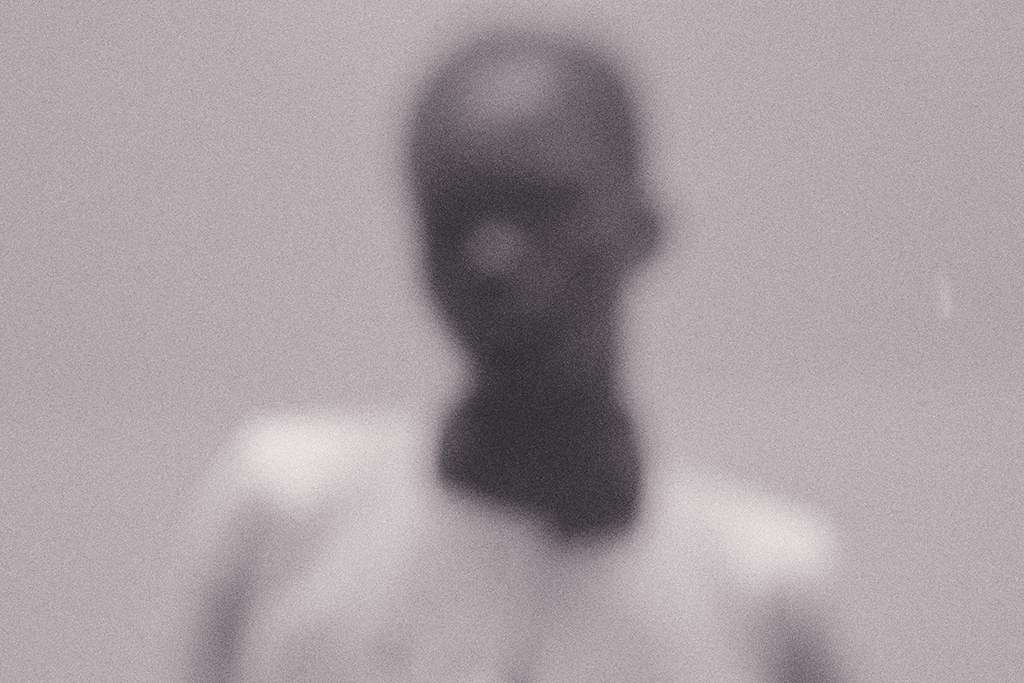
Courtesy Saint Heron.
As Saint Heron evolves into a cultural institution of its own, how do you want to it differing from the institutions that are already out there?
We aren’t setting out to create something different, we are trying to create something honest. We are trying to build a space where the process is the work, the evolution is the work. There may be times where we are quiet or idle, and that’s a part of the process too. We invite our community to be a part of that.
We want to create a space where we don’t have to fill in the blanks by creating a language of understanding. There are certain gestures and body languages within us that are unspoken. We want this to be an institution that understands what is not spoken. We are creating an embodiment of living testaments to the glory of expression, and how that recharges and reaffirms the reverence we hold for our own cultural and artistic worth. We look forward to furthering the pursuit of authenticity that empowers the stories of our people. All the projects are bricks Saint Heron adds to history’s foundation for tomorrow’s imagined heights.